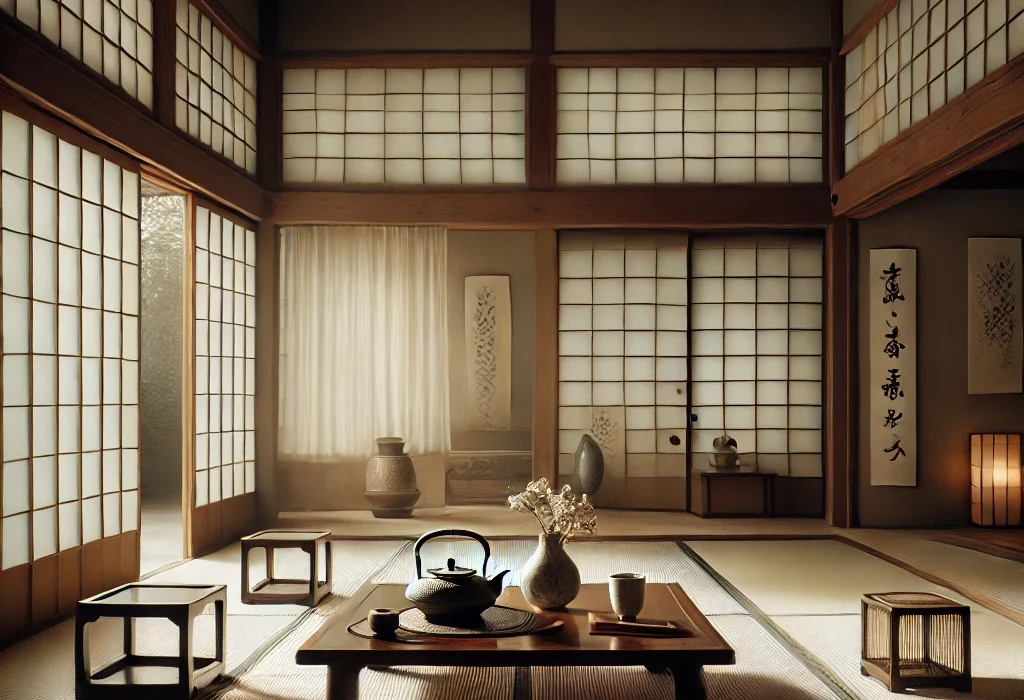The Book of Tea by Kakuzo Okakura, first published in 1906, delves into the philosophy and cultural significance of tea in Japan. Okakura, a prominent Japanese scholar, explores the profound impact of tea on Japanese art, culture, and society, presenting tea not merely as a beverage but as a symbol of aestheticism and spiritual harmony. This exploration is set against the backdrop of Eastern and Western cultural exchanges, highlighting the nuanced understanding and appreciation of Japanese traditions.
Plot Summary
In a time long past, tea began as a humble medicine in China, revered for its healing properties. As centuries unfolded, this unassuming leaf transformed into a symbol of refined culture and spiritual depth. By the eighth century, tea had entered the realm of poetry, celebrated as one of life’s delicate pleasures. By the fifteenth century, Japan had elevated it to a near-sacred status, known as Teaism—a philosophy of beauty amidst life’s imperfections, a harmonious blend of purity, mutual respect, and social order.
Teaism, as described by Okakura Kakuzo, is more than aestheticism; it is a philosophy intertwined with ethics and religion, embodying the Japanese worldview. It promotes cleanliness, simplicity, and an appreciation for the imperfect, making every tea drinker an aristocrat of taste. Japan’s long isolation fostered an introspective culture where Teaism permeated daily life, influencing everything from home decor and clothing to literature and art. This cultural ethos taught peasants to arrange flowers with care and inspired laborers to find beauty in rocks and waters.
The first chapter, “The Cup of Humanity,” begins with tea’s humble origins and its evolution into a sophisticated cultural practice. In Japan, tea became a symbol of refined living, embodying the nation’s values of simplicity and harmony. Tea ceremonies, or Chado, are intricate rituals that epitomize the Japanese spirit, blending aesthetics with spirituality. The philosophy of tea represents a quest for balance in a world filled with sorrow and imperfection.
Okakura reflects on how the West often misinterprets the East, viewing practices like the tea ceremony as quaint oddities. Yet, he argues, the West has accepted the cultural significance of tea, embracing it as a refined social ritual. Tea, with its gentle allure, stands in stark contrast to the aggressive glorifications of war and conquest. Okakura laments the mutual misunderstandings between East and West, hoping for a future where each culture can appreciate the other’s unique contributions.
“The Schools of Tea” chapter delves into the different methods of tea preparation that have evolved over centuries. The Tang dynasty favored Boiled Tea, a method involving elaborate preparations that included mixing tea with various ingredients like rice, ginger, and salt. The Song dynasty introduced Whipped Tea, where tea leaves were ground into fine powder and whisked into hot water. The Ming dynasty, which preferred Steeped Tea, steeped the leaves directly in hot water, a practice that remains popular today. Each method reflects the cultural and philosophical inclinations of its time, showing how tea is not just a beverage but a reflection of life’s broader patterns.
In “Taoism and Zennism,” Okakura explores the spiritual dimensions of tea, linking it to Taoist and Zen philosophies. Taoism, with its reverence for natural simplicity and the beauty of imperfection, aligns perfectly with the principles of Teaism. Zen Buddhism, which emphasizes meditation and mindfulness, further deepens the spiritual aspect of tea drinking. The tea ceremony becomes a meditative practice, a moment of stillness and reflection in a chaotic world. Okakura highlights how these philosophies teach an appreciation for the fleeting beauty of life, encouraging a serene acceptance of the impermanent nature of existence.
“The Tea-Room” chapter describes the architectural and aesthetic principles of the traditional Japanese tea-room, or Sukiya. These tea-rooms are modest, designed to foster a sense of peace and introspection. The construction and decoration of a tea-room follow strict principles of simplicity and naturalness. Everything, from the choice of materials to the arrangement of flowers, is meant to create a harmonious and tranquil environment. The tea-room serves as a sanctuary from the distractions of everyday life, a place where one can engage in quiet contemplation and appreciation of beauty.
In “Art Appreciation,” Okakura discusses the connection between tea and Japanese art. The practice of tea cultivates a refined sensibility, teaching an appreciation for the subtle and transient beauty of life. He reflects on how the tea ceremony has influenced various forms of Japanese art, including pottery, flower arranging, and painting. Through tea, one learns to find beauty in simplicity and imperfection, appreciating the delicate balance of natural elements. Okakura emphasizes that true art lies in the ability to see beauty in the ordinary, finding profound meaning in the simplest of things.
The final chapter, “Flowers,” explores the art of flower arranging, or Ikebana, and its integral role in the tea ceremony. The arrangement of flowers in the tea-room reflects the same principles of simplicity and naturalness that govern the entire practice of Teaism. Each flower is chosen and placed with careful consideration, allowing its natural beauty to shine. Okakura describes how this practice teaches respect for nature and an appreciation for its fleeting beauty. Through the careful arrangement of flowers, one learns to see the world with fresh eyes, finding joy in the smallest details.
Main Characters
- Tea Master (Sen no Rikyu): A historical figure who perfected the art of the tea ceremony, emphasizing simplicity and the wabi-sabi aesthetic.
- Peiwoh: The legendary harpist in Okakura’s parable, symbolizing the ideal artist who brings out the hidden beauty in art, much like a tea master with tea.
Theme
- Simplicity and Minimalism: Central to Teaism, reflecting the belief in the beauty of the simple and the unadorned.
- Harmony and Balance: In tea preparation, the tea-room design, and life, harmony is achieved through balance and mindfulness.
- Cultural Exchange: The narrative contrasts Eastern and Western cultural values, advocating for mutual understanding and appreciation.
- Spirituality and Aestheticism: Tea as a spiritual practice, blending Taoist and Zen principles, cultivating inner peace and appreciation for beauty.
Writing Style and Tone
Okakura’s writing is poetic and philosophical, blending narrative with reflection. His tone is contemplative and often critical of Western perceptions of Eastern culture. He uses rich metaphors and historical anecdotes to illustrate his points, making the text both informative and engaging. The prose flows with a serene rhythm, mirroring the tranquil nature of the tea ceremony itself.
We hope this summary has sparked your interest and would appreciate you following Celsius 233 on social media:
There’s a treasure trove of other fascinating book summaries waiting for you. Check out our collection of stories that inspire, thrill, and provoke thought, just like this one by checking out the Book Shelf or the Library
Remember, while our summaries capture the essence, they can never replace the full experience of reading the book. If this summary intrigued you, consider diving into the complete story – buy the book and immerse yourself in the author’s original work.
If you want to request a book summary, click here.
When Saurabh is not working/watching football/reading books/traveling, you can reach him via Twitter/X, LinkedIn, or Threads
Restart reading!








